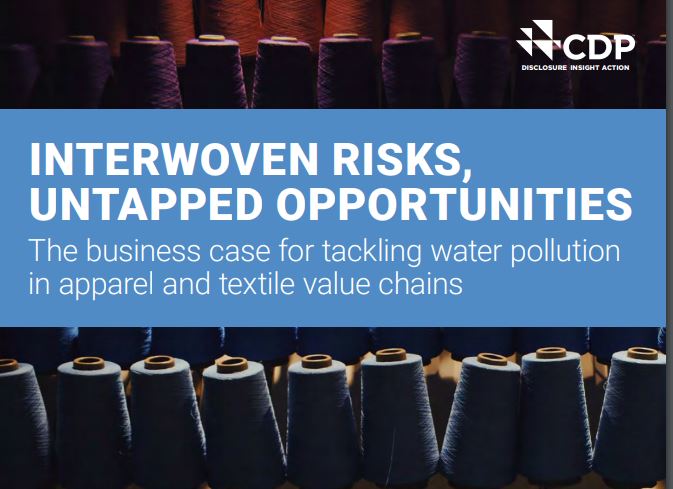CDP Report For Fashion Sector Highlights Misses, Opportunities

In a new report titled Interwoven Risks, Untapped opportunities-The Business Case for tackling water pollution in apparel and textile value chains“, CDP has highlighted the distance that needs to be traveled by the $2.5 trillion fashion and garment firms, to ensure their impact on water pollution, and the environment, is minimised. As we have covered earlier too, the fashion industry has been a huge culprit when it comes to water pollution. South Asia, which is a large textile hub, especially Bangladesh and India, has suffered a lot from the pollution caused. While some progress has been made, including in India, in terms of using more sustainable materials for the sector, the water issue remains a missing link.
The report analysed water data from 62 companies involved in the fashion, apparel, footwear, and home textiles industry. Brands, manufacturers, and retailers in the industry responded to CDP’s 2019 water security questionnaire. According to the report , these firms identified over $180 million worth of opportunities in cutting down water pollution.
Only 11 percent , or 7 firms identified water pollution as a key issue , pointing to just how limited awareness remains, even today.
A key issue in the fashion and textile sector has been awareness, with most firms content to limit efforts to their own manufacturing process. On the other hand, right from how say, cotton is grown , to the use of pesticides , to the impact of dye making , and finally, even the disposal of cloths and other waste, industry has preferred to turn away from asking too many tough questions.
Thus, only 8% of disclosing companies reported substantive risks associated with raw material production, and not a single company considers pollution at the product use and disposal phases to be a substantive risk to their business.
Take microplastics, where the sector is the largest contributor to pollution in the oceans. In the report, only H&M reported mentioned encouraging the of use guppy bags when washing clothes to reduce the release of microfibers, for instance.
H&M is also testing a technology called Colorifix, a dying alternative that could reduce water use by 90 percent in the dye making process. The firm also uses the Higg Index for their suppliers, to measure their water usage.
Other key opportunities are in recycling of used cloths, building zero discharge plants where firms like Gap Inc are taking the lead. Opportunities also exist in recycling plastic by converting it into apparel, something readers in India have experienced with Decathlon, the French sporting goods stores.

Courtesy: CDP Report
The task ahead is exemplified by the fact that less than a quarter of responding companies (23%) disclosed water pollution-related targets or goals anywhere in their value chain; only 6% monitor and report progress against these targets.
Or just 21% of disclosing companies report water pollution risks that have the potential to pose a substantive financial or strategic risk to their business. The majority of these reported risks were identified in the manufacturing stages of the value chain.
The report stresses on the need to work jointly with suppliers, disclose information more transparently and consider the required changes as opportunities, even as pressure from stakeholders ranging from investors and consumers will only go up to follow cleaner methods.




